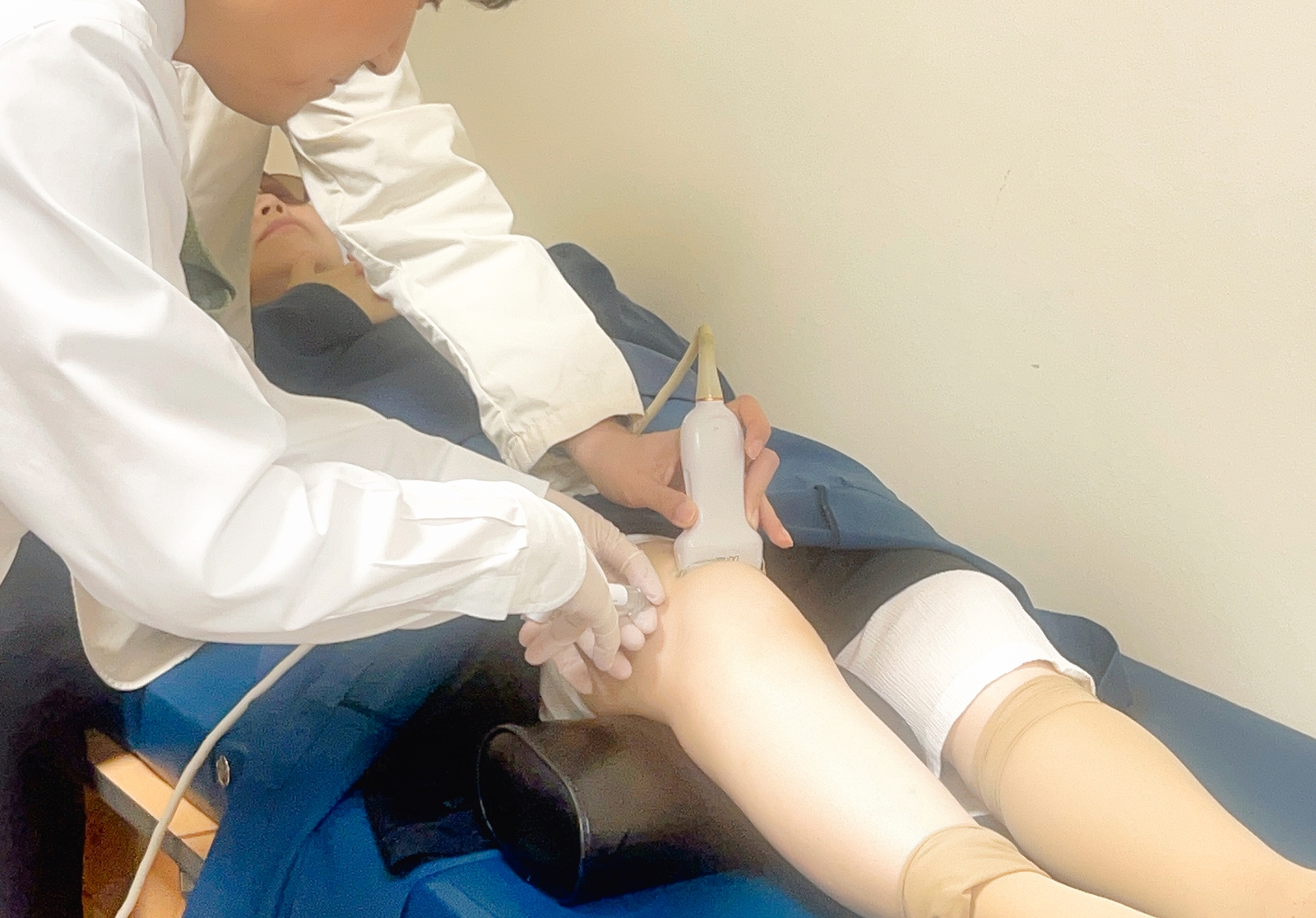Professor Joo Ji-hyun's research team succeeded in treating osteoarthritis, the first 3D....
- Writer :External Affairs Team
- Date :2025.05.12
- Views :35
Professor Joo Ji-hyun's research team succeeded in treating osteoarthritis, the first 3D cartilage cell therapy in Korea using stem cells

△ (From left) Professor Lim Ye-ri, Professor Joo Ji-hyun, and Dr. Nam Yoo-jun
The Catholic University of Korea Catholic Medical Center has taken a meaningful first step in the field of osteoarthritis treatment.
Professor Joo Ji-hyun of The Catholic University of Korea Medical Center's Advanced Cell Therapy Project Group (The Catholic University of Korea Medical University of Korea, Rheumatology Department at Seoul St. Mary's Hospital), Professor Lim Ye-ri of The Catholic University of Korea Medical School's Judo Pluripotent Stem Cell Application Research Center, and Dr. Nam Yoo-jun of Ipsel Co., Ltd. and The Catholic University of Korea St. Mary's Hospital successfully demonstrated their safety by administering a three-dimensional cartilage cell injection made using stem cells to osteoarthritis patients. This treatment is an unprecedented attempt in the world, and is attracting attention from academia and medical circles in that it has opened up new possibilities for regenerating damaged cartilage.
Professor Joo Ji-hyun's research team directly injected three-dimensional (3D) cartilage cells derived from "Indirect Pluripotent Stem Cell (iPSC)" into the joint cavity of two osteoarthritis patients on April 17 and April 30.
All patients completed the procedure well without any adverse reactions during the treatment process, and there were no side effects such as inflammation or pain within a short period of time. This is the first clinical case in the world to administer stem cell-based 3D chondrocytes by injection, and it is a very meaningful achievement.

To put it simply, iPSC is a stem cell that can grow into any cell by returning cells with a predetermined role, such as adult skin or blood cells, to their initial state. In other words, it has a special ability to transform into cells in various tissues or organs of our body.
In this study, chondrocytes were made using these iPSCs, and these chondrocytes were processed into a three-dimensional "spheroid" and developed in the form of injections. This spheroid is literally a small spherical mass of cells, designed to settle and function stably when placed in the body.
The core of the study is that the space where the injection was injected is the 'joint cavity'. The joint cavity is a space that surrounds the joint, and is known as an 'immune privilege' area in which immune cells are more restricted than ordinary tissues.
Usually, when someone else's cell is put into the body, the immune system recognizes it as an 'external intruder' and attacks it. This is called an 'immune rejection reaction'. However, because the joint cavity has a structure that restricts blood flow and does not penetrate immune cells well, the transplanted cells can be positioned relatively safely.
Using such characteristics, the research team confirmed that no immune rejection reaction occurs even after transplantation of iPSC chondrocytes whose histocompatibility antigen (HLA) does not match, iPSC chondrocytes derived from other people. This is also a new approach that is hard to see in conventional treatments.
Osteoarthritis is a typical degenerative disease that causes cartilage loss due to aging or repeated use of joints, resulting in joint pain and movement restrictions. Currently, most of the methods are to relieve symptoms through medication, physical therapy, and injection therapy, and treatments to "regenerate" cartilage are very limited.
This study is significant in that it has gone beyond simple symptom relief to replace or regenerate the damaged cartilage itself with stem cells. In particular, in our rapidly aging society, it is expected to be a technology that can dramatically improve the quality of life of osteoarthritis patients.
Professor Joo Ji-hyun said, "This clinical trial is not just a one-time trial, but the result of the accumulation of stem cell research and clinical experience over the past few years," adding, "We plan to closely prove the effectiveness and safety of treatment through long-term follow-up in the future." He then emphasized, "The fact that treatment is possible without immune rejection, in particular, is a very important turning point in the commercialization of stem cell therapy."
Min Chang-ki, head of The Catholic University of Korea's Basic Medicine Project Promotion Team, also emphasized the meaning of this study. Professor Min said, "This project is an exemplary case created by close cooperation between hospitals, universities, industries, and research institutes," adding, "We will expand to global multi-center clinical trials in the future to lead the commercialization of regenerative medical technology at a world-class level."
The research was carried out through infrastructure support from the Catholic University of Korea's Catholic Central Medical Center Basic Medicine Project Promotion Team, and the Advanced Cell Therapy Project Group, headed by Professor Joo Ji-hyun, has been carrying out research and clinical practice in an integrated manner. The project group has been laying the foundation for research on the development of advanced biotherapeutics such as stem cells and gene therapy drugs, and this clinical trial is considered an important fruit of its efforts.

